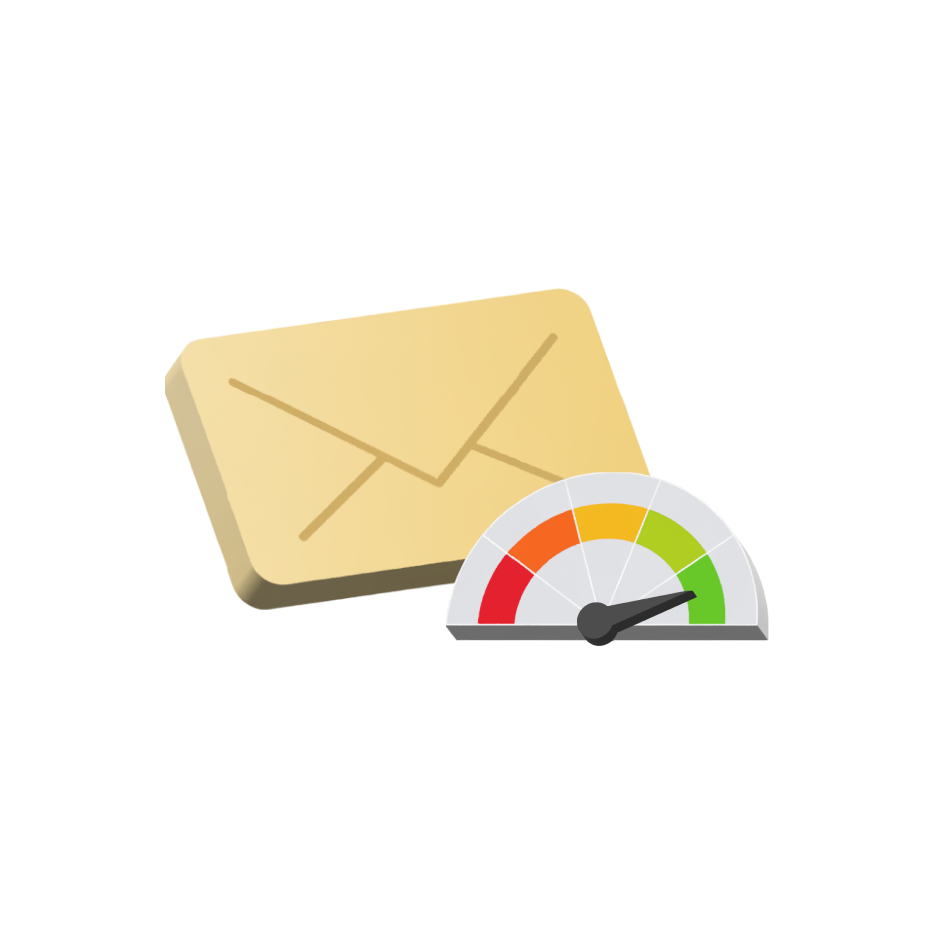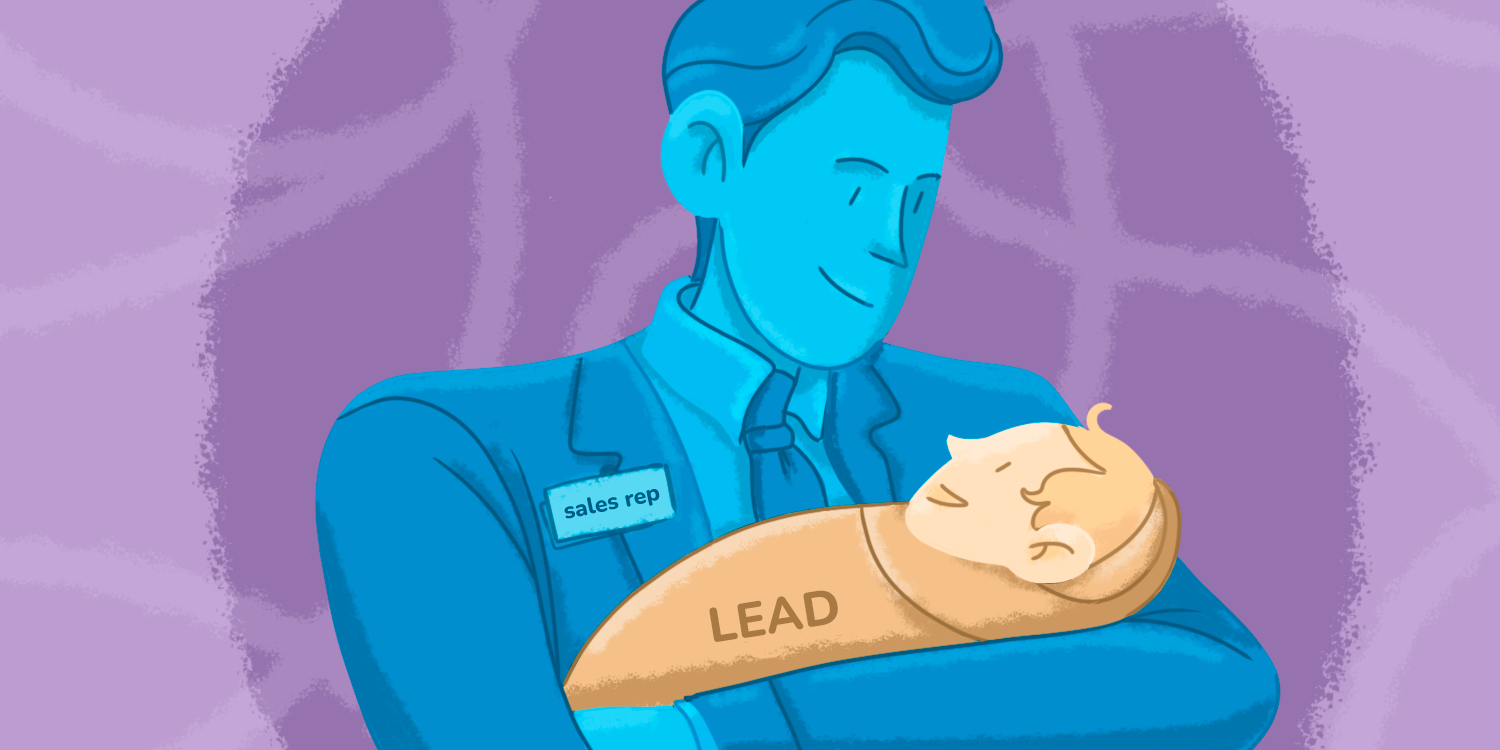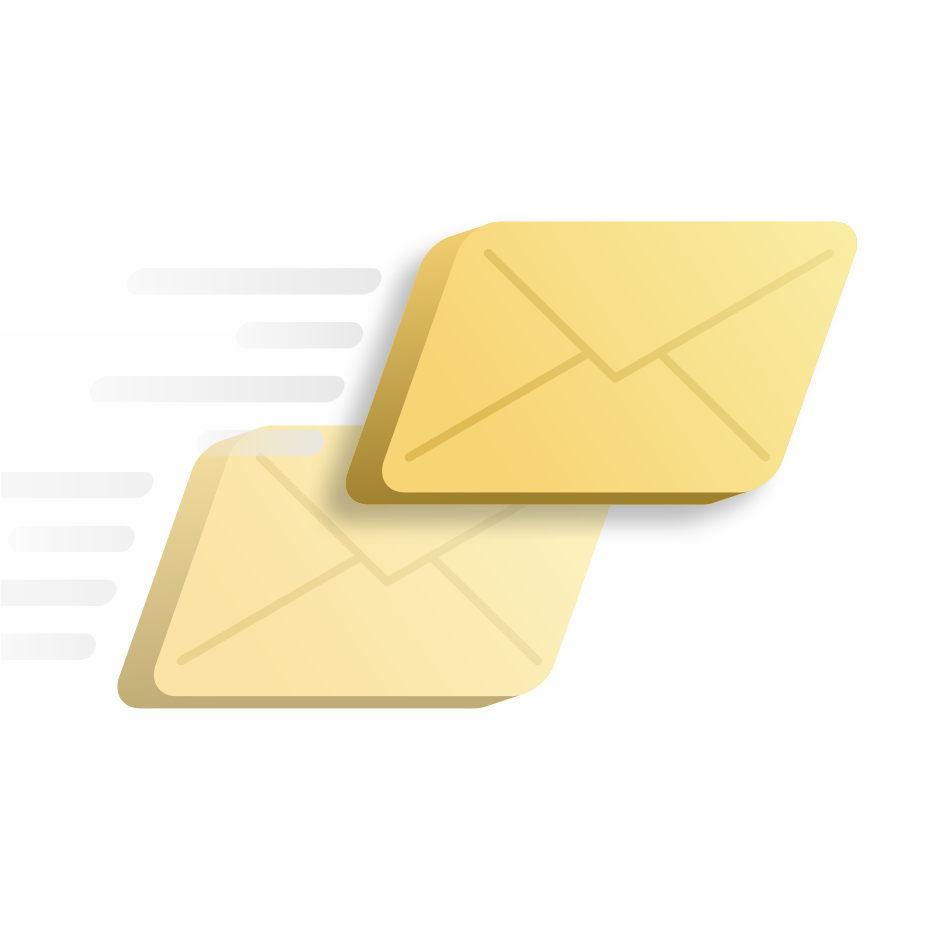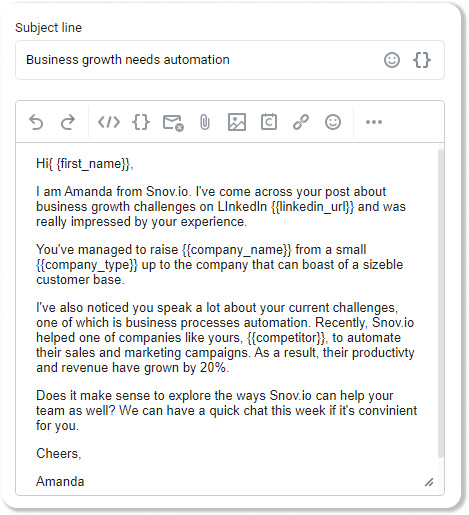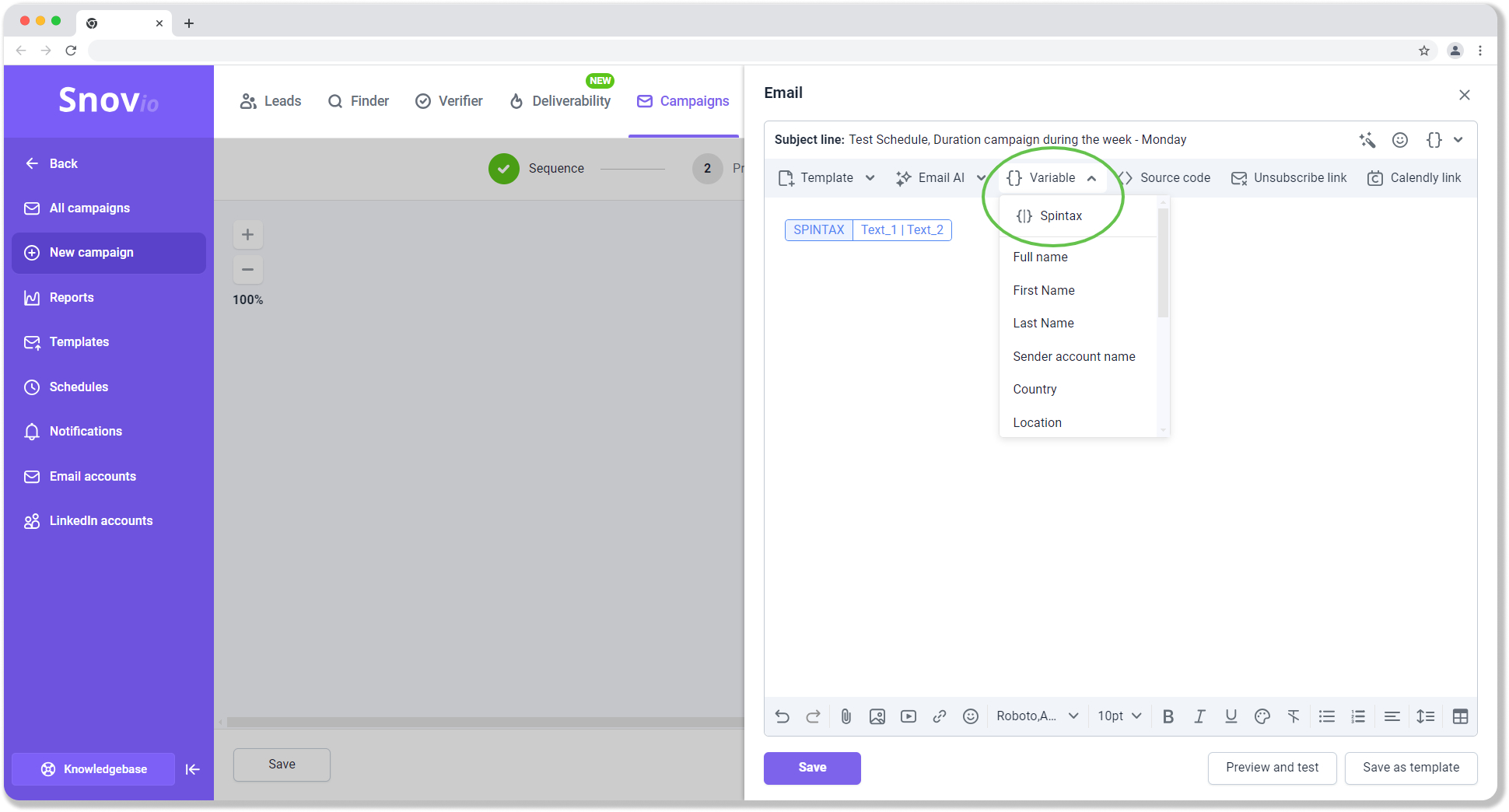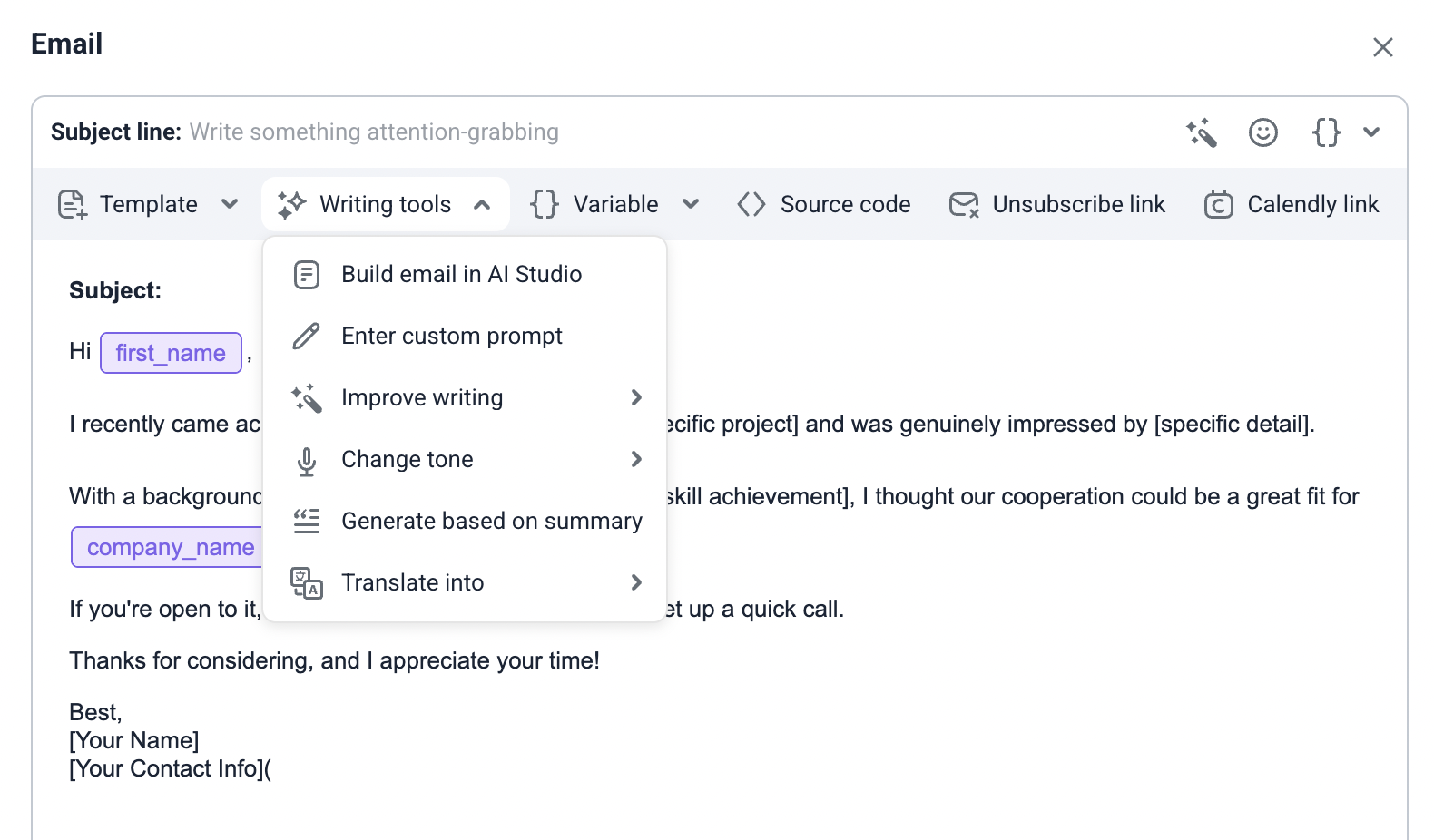There are different types of marketing emails you can send to win over your audience. The choice depends solely on your goals—from sharing exciting new products to announcing events and offering promotions. The more of them you cover, the better your chances of finding interested leads and turning them into happy customers.
Ready to explore the key features and types of emails that supercharge lead generation, targeting, personalization, and sales for businesses of all sizes? Take a sneak peek at our email examples lineup and stash them for your upcoming email campaigns.
Outline
Why do you need different types of emails?
According to Hubspot, as of 2024, 87% of marketers are gearing up to use different types of emails. Why?
Here are the main advantages of using email marketing:
- Top efficiency
- High ROI
- Targeted outreach
- Impactful content
- Relationship building
- Addressing different stages of the buyer’s journey
- Testing and optimization
Top efficiency
According to the Litmus 2023 State of Email Workflows Report, 41% of users named email marketing the most effective user acquisition channel. It beat out even social media and paid search (16% each).
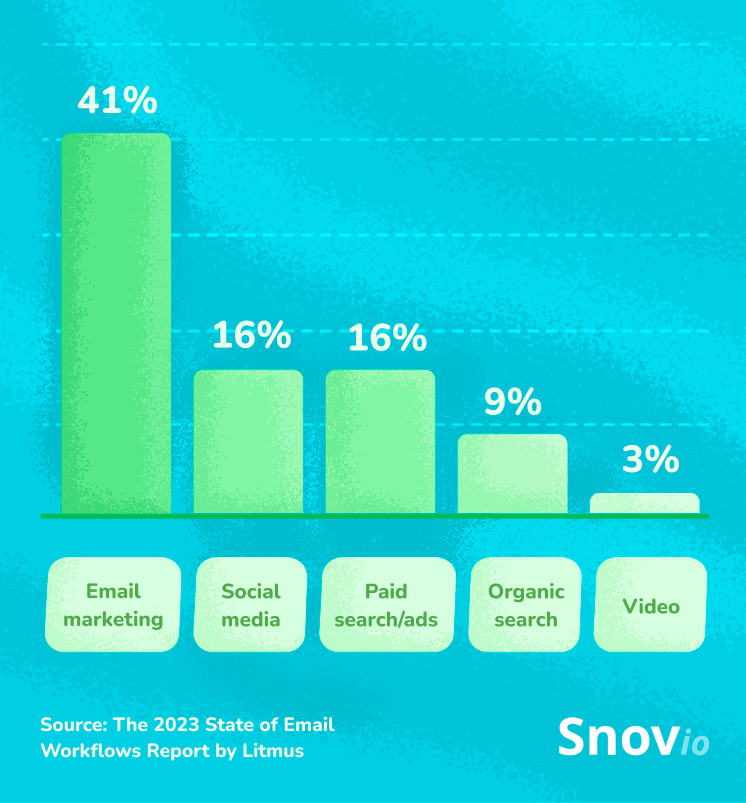
Email subscribers support this statement. According to a survey by Statista, 27% of consumers said they’d probably buy a product after getting an email newsletter. This shows how powerful and effective email marketing can still be for reaching and connecting with potential customers.
The Consumer Email Tracker 2023 report by the Data & Marketing Association just proves it, saying that:
- 64% of consumers call marketing emails their preferred source for offers.
- 53% of consumers buy new products/services via marketing emails.
- 44% of consumers choose marketing emails as the source of advice/reviews.
High ROI
According to Mailjet’s Inbox Insights 2023 report, 41.8% of respondents opt for email marketing as their primary channel to achieve the highest ROI during economic downturns.
|
👀 Did you know? According to Statista, companies generate an average of $36 for each U.S. dollar invested in email marketing. Notably, the retail, e-commerce, and consumer goods sectors boast the highest return on investment (ROI), reaching $45. |
Targeted outreach
Different types of emails allow you to tailor your message to various audience segments. For example, you might send promotional emails to prospects interested in your product or service while sending announcements or automatic transactional emails to others. Such a targeted approach increases the relevance of your marketing efforts.
In addition, by delivering relevant messages to your customers, you significantly decrease the chances they would mark them as spam or simply ignore them, thus improving your deliverability rate.
Impactful content
Mixing promotional emails, product updates, customer reviews, and other types of emails can create a strong connection with your recipients. This is because you go beyond pushy sales pitches and provide real value, keeping your audience engaged and building rapport faster.
Relationship building
Lead nurturing is a crucial part of email marketing and sales. If you research your audience’s needs, segment your email list, and focus on providing relevant content, you can grow customer loyalty.
By using different types of emails, you can strengthen your bond with your users and grow customer loyalty. Besides, your new subscribers will become more familiar with your product or service.
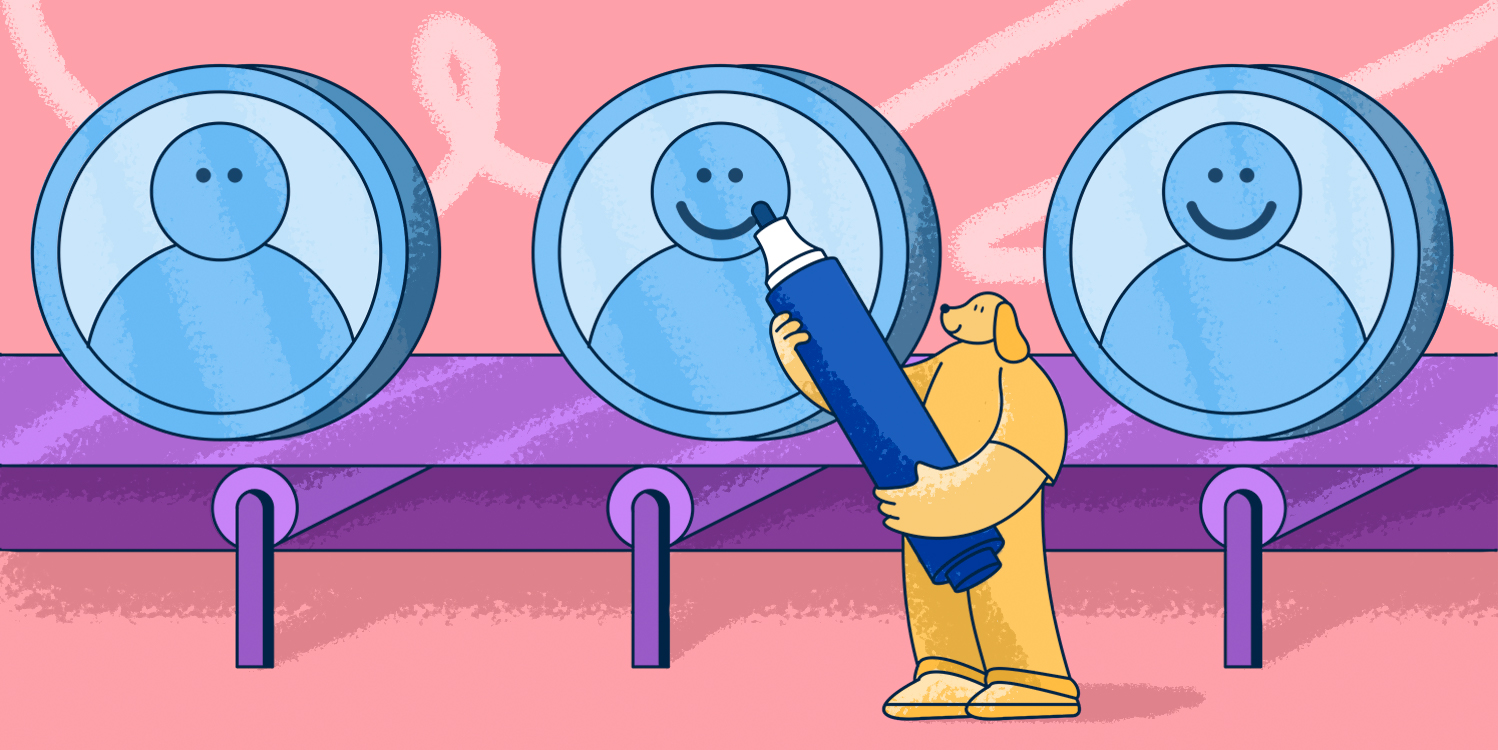
How To Calculate And Improve Your Customer Retention Rate
January 20 2024
Addressing different points of the buyer’s journey
It’s important to guide your customers through each phase of the sales funnel. For example, a weekly newsletter might be more appropriate for those in the awareness stage, while promotional emails might be better suited for those in the decision-making stage.
Testing and optimization
By experimenting with different types of emails, you can gather enough data on what works best for your target audience. You can try various content formats, email subject lines, or call-to-action to determine which types of emails bring more conversions. All insights you’ll get from your tests will help you continuously optimize your email marketing strategy.
It’s not surprising that email marketing continues to gain popularity across various industries. And according to Statista, the worldwide revenue of this lead generation channel is expected to soar to $17.9 billion by 2027.

18 different types of business emails: examples and expert tips
So, now that we’ve proved the importance of email marketing, it’s time to dive into the different kinds of emails and when you should use them, whether you want to attract new subscribers or engage existing customers.
Different types of emails for various purposes:
- Hello email
- Get started
- Offers
- Thank you’s
- New product announcement
- Special offer
- Giveaway
- Anniversary greetings
- Progress updates
- Birthday milestone
- Confirmation
- Password reset
- Payment receipt
- Educational emails
- Curated content
- Upcoming event invitation
- Product updates
- Privacy policy updates
Welcome emails
Open and click-through rates of welcome emails are four times higher than of any other marketing email? At this stage, people are interested in what you can offer, so it’s crucial to make a great first impression and ensure your new subscribers feel they are being cared for.
|
👀 Did you know? Welcome email boasts an impressive 91.43% open rate and a stellar 26.90% click-through rate. – Mailmunch 74% of email subscribers expect to receive a welcome email right after hitting the “Subscribe button.” – Omnisend |
⏰When to send?
Welcome emails are typically sent immediately after website visitors subscribe to a newsletter, create an account, or make a purchase. The goal is to engage with email subscribers while their interest in your brand remains fresh.
💌What to include?
Welcome emails commonly include the following elements:
- An enticing subject line
- A warm greeting
- An expression of gratitude for subscribing
- An introduction to your product or service
- Content recommendations
- Personalized offers
- Relevant information about what a new subscriber can expect from your promotional emails later in time
- A clear call to action to encourage future communications
- Unsubscribe option
Of course, you don’t have to implement all these simultaneously. Choose and test various options to find the perfect solution for your goals.
Now, let’s explore some welcome email examples you can use in your campaigns.
Hello email
When people subscribe to your blog newsletter, they’re eager for a quick reply. Send a friendly hello email to introduce yourself or your brand and offer special offers for first-time subscribers.
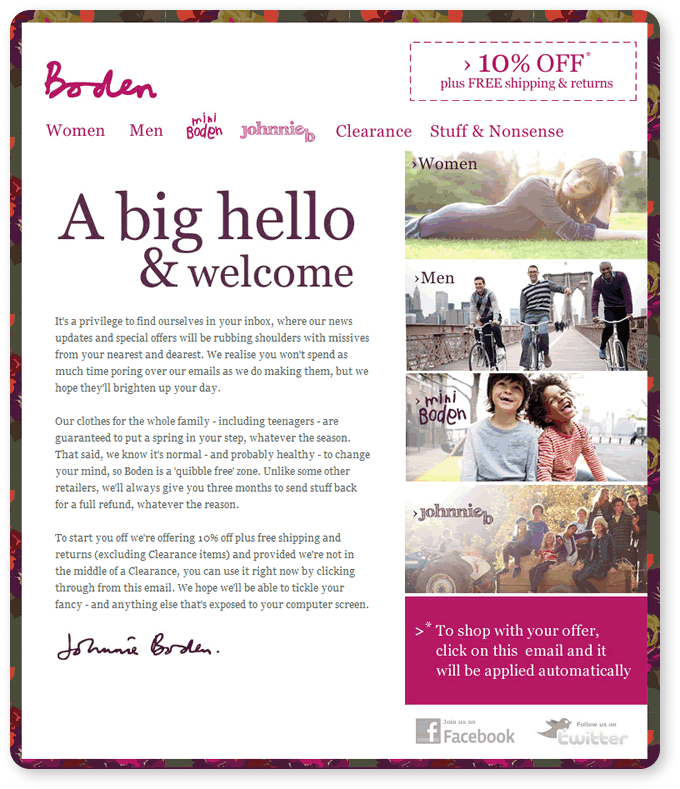
Get started
Once a person subscribes to your service or blog, send them a ‘get started’ message as a helpful guide. It should contain key information on how to kick-start their journey with you. Here’s what Snov.io sends subscribers to help them navigate.
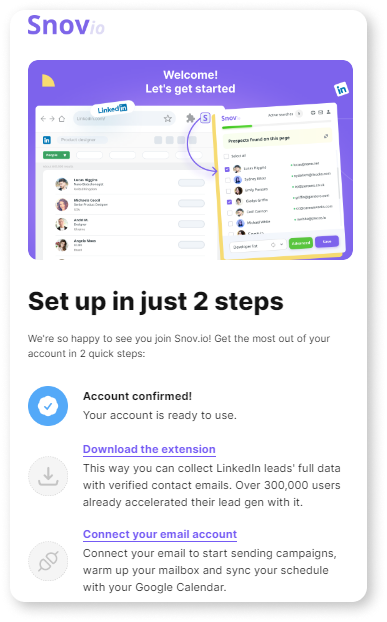
Offers
Welcome emails with exciting new offers or flash sales always grab attention. You can include a special discount code or throw in invites to some of your events. In Snov.io welcome emails, we often provide plan upgrades to subscribers who have chosen a Trial plan.
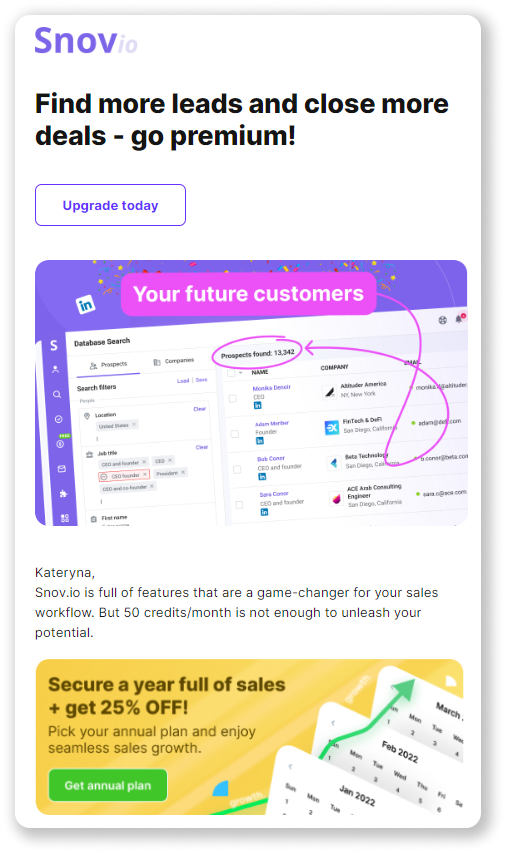
As you can see, we offer a 25% discount to encourage our customers to explore more opportunities for their business growth.
Thank you’s
When new users sign up, send them a friendly email to thank them for checking out your products. This is a great way to remind customers they are valued and nudge them closer to a purchase.
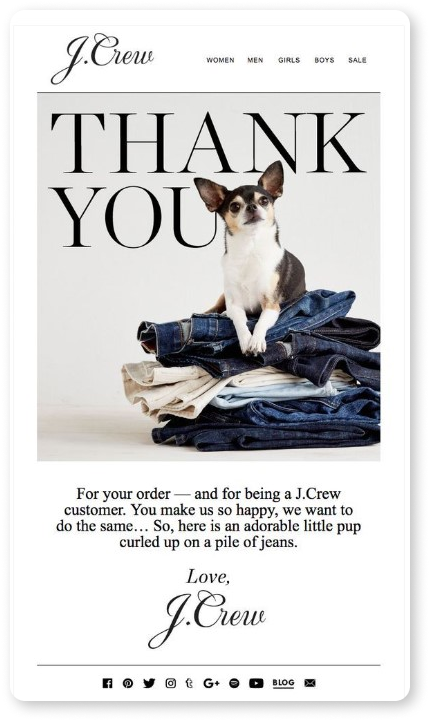
→ Get more welcome email ideas and templates from our article 10 Welcome Email Templates That Grow Sales
Promotions
These marketing messages are intended to inform customers about new offers, latest deals, etc.
⏰When to send?
The best time to send promotional emails depends on your target audience and specific goals. However, some general guidelines can help:
- Send on weekdays. Tuesdays, Wednesdays, and Thursdays are prime for sending promotional emails. These mid-week days are less busy than Mondays and Fridays, which makes them ideal for higher engagement.
- Send at morning hours. Research shows that sending promotional emails between 9 AM and 12 PM is more effective. People typically check their emails at the start of their workday. However, optimal timing may vary based on your audience’s habits, so it is advisable to experiment with different times.
- Avoid weekends. Promotional emails sent at weekends tend to yield lower click-through rates. People usually are less focused on work-related matters during this time, so they may overlook or even delete emails.
- Consider time zones. If your existing customers live in different time zones, try scheduling your emails to arrive at times that match their local clocks.
Make sure your email platform schedules emails automatically, adjusting delivery times based on your recipient’s location.
💌What to include?
Depending on your email strategy, your promotional marketing email might cover:
- Limited-time offers
- Customer-exclusive deals
- Seasonal or holiday promotions
- Product launches
- New arrivals
- Contests and giveaways
- Free content like eBooks, white papers, guides, infographics, and more
- Any other special deals, like buy-one-get-one, refer a friend, coupons, and promotional codes
It’s high time to consider some popular promotional email examples.
New product announcement
These types of emails excel at sparking a feeling of excitement and anticipation, making recipients eagerly await what’s to come. Let’s look at the example from Snov.io. We’ve launched our LinkedIn automation tool and informed our users with the following message:
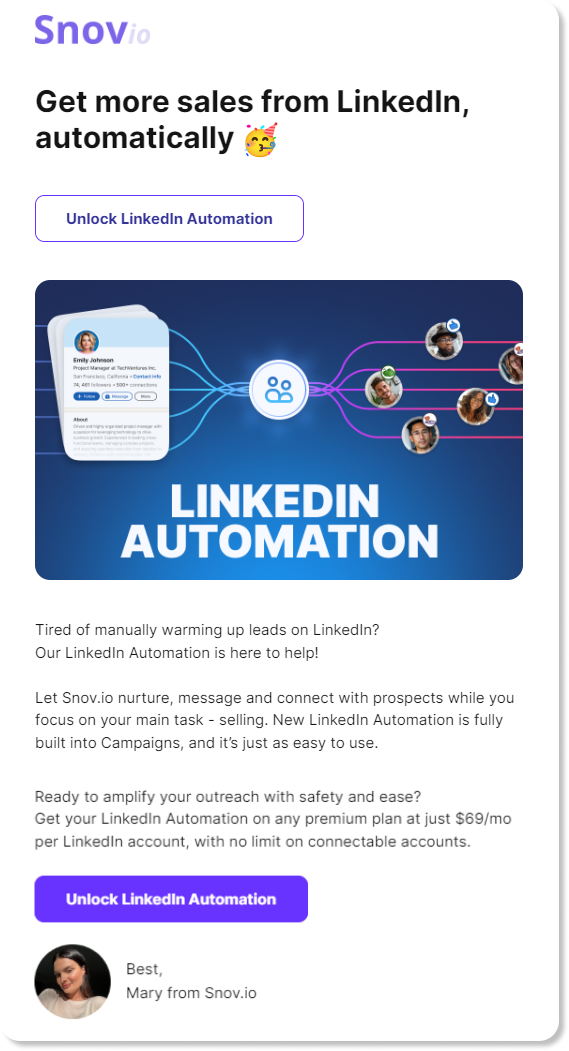
And if you’re interested in gaining more clients with LinkedIn Automation, welcome to our new course! You’ll uncover new LinkedIn lead-generation possibilities and learn how to automate your outreach like a pro.
Special offer
Such emails boost sales by tapping into customers’ feelings of exclusivity and importance. They can include:
- Exclusive VIP offers
- Early access previews
- Limited-time sales
- Personalized discounts
- Surprise gifts or bonuses
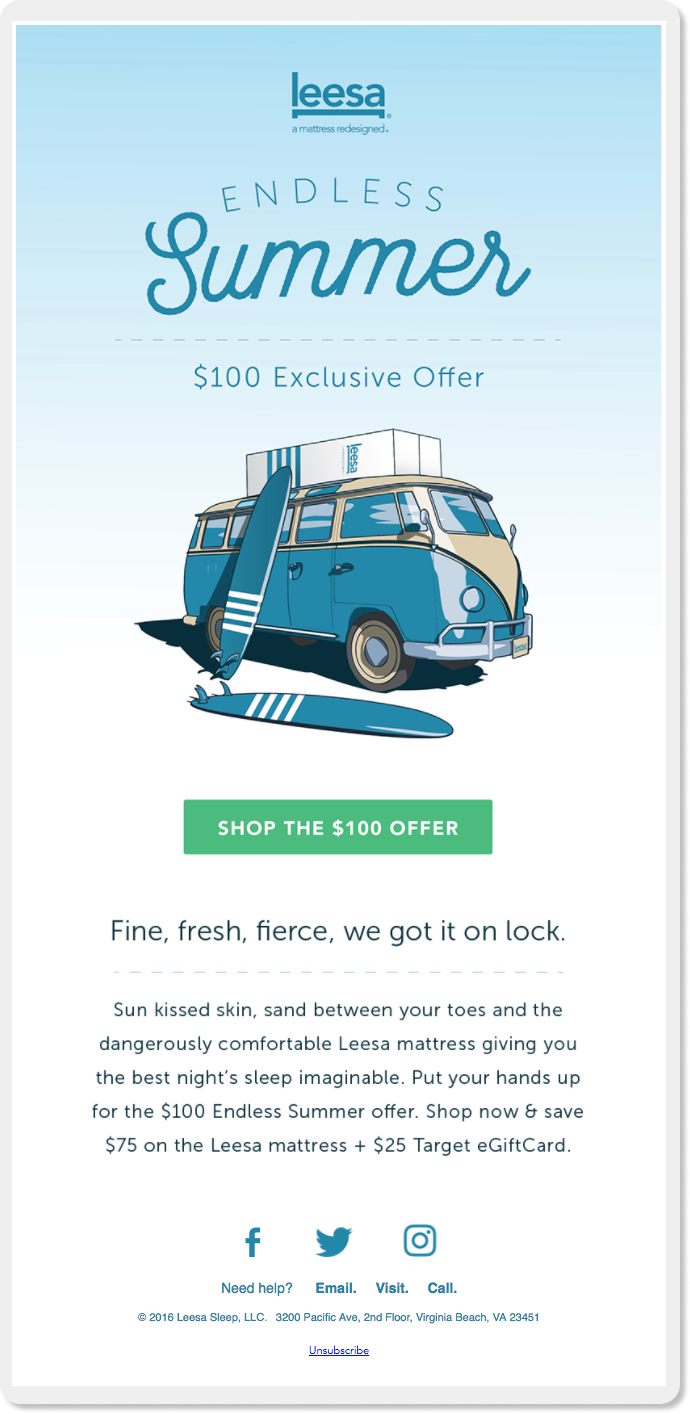
Giveaway
This can be an effective tool to attract and engage customers, boost sales, and expand your email subscriber base. A well-rounded giveaway campaign includes a series of emails tailored to different stages of the process.
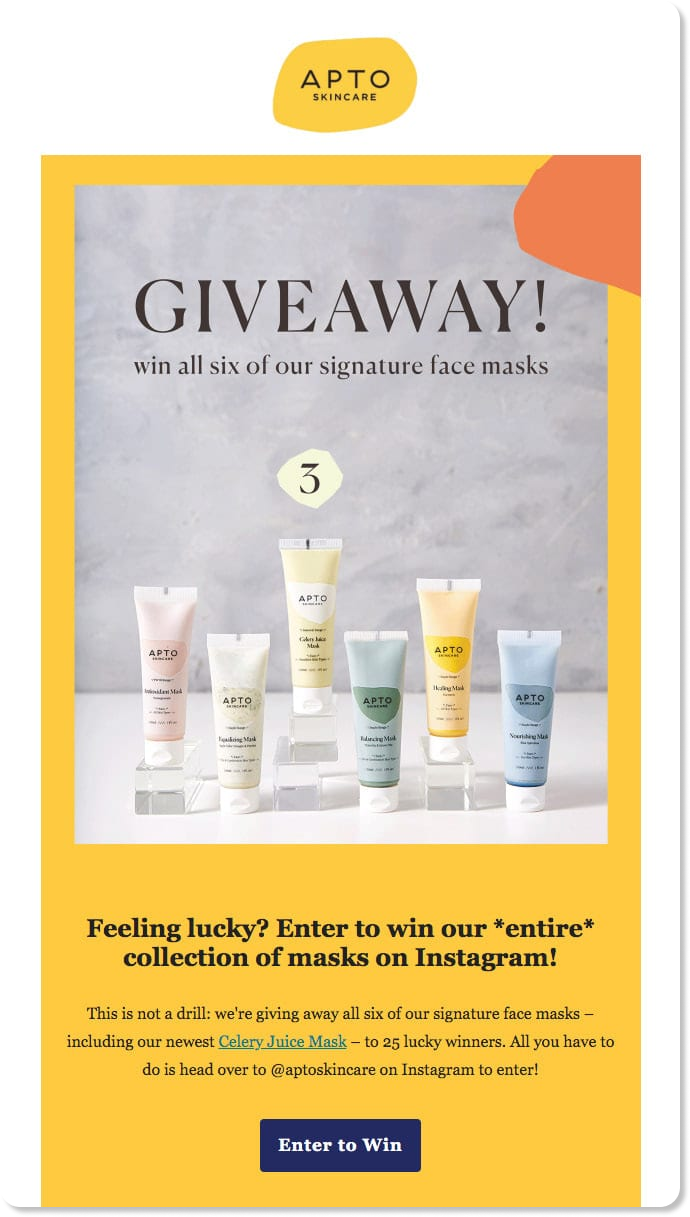
Celebrations
This category includes messages that aim to congratulate subscribers on their accomplishments, commend them for using your service, etc. For example, milestone emails are typically sent to clients after subscription renewal or their first purchase, etc.
💌What to include?
- Significant accomplishments or progress made since the last update
- Current status of the product-related activities
- Information about the milestones or events that customers can expect shortly
- Challenges encountered during the product-related activities and solutions
- Feedback request so customers could share suggestions or concerns about your offerings.
- Next steps in the project or service timeline
- Express gratitude to the customer for their continued collaboration or partnership.
Let’s take a look at some examples.
Anniversary greetings
Such emails honor a customer’s purchase or sign-up milestone, recognizing loyalty and encouraging repeat business.
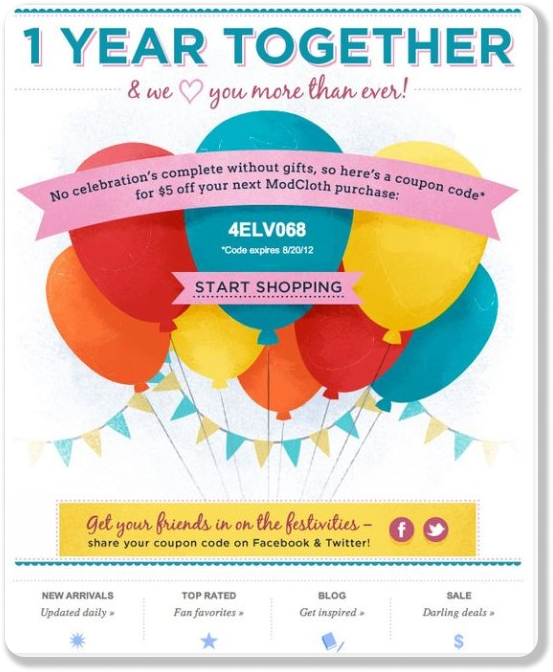
Progress updates
These emails will help keep your subscribers updated on their achievements with your solution and encourage them to engage with your product or service further. Here’s an example from Snov.io:
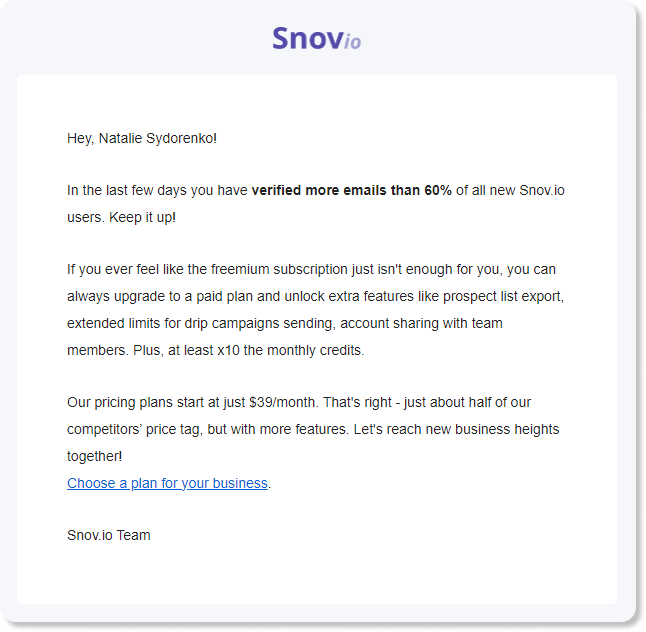
Birthday milestone
These emails are an excellent way to foster client interaction and strengthen the customer-brand relationship. Your main goal is to make these messages personalized, including birthday presents such as special offers or discounts.
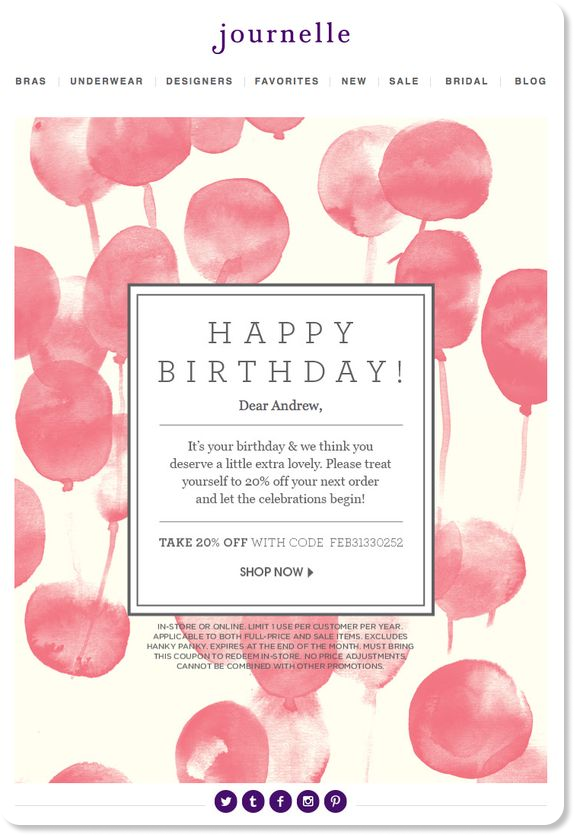
Transactional emails
These automatic messages are triggered by specific customer actions. They confirm, update, or notify clients about various events in real-time.
⏰When to send?
- Order confirmation. Set them to be sent immediately after a customer settles a payment on your website or app.
- Shipping updates. Sent when the order status changes, such as when the package is delivered.
- Password reset requests. Sent as soon as a customer requests to reset their password to ensure timely access to their account.
- Account creation. Sent immediately after a customer successfully signs up for an account on your platform.
- Payment receipts. These are sent promptly after purchase, confirming the transaction and providing a receipt for the customer’s records.
- Subscription renewal notices. These notifications are sent before subscription renewals to remind customers of upcoming payments and provide options for managing their subscriptions.
💌What to include?
- Confirmation details
- Necessary steps the recipient needs to take
- Contact information of your customer support
- Relevant links
- Links to privacy policies or security measures
- Opt-out options
Now, let’s review some transactional email examples.
Confirmation
Confirmation emails validate the actions recipients have taken. These can be:
- Sign-up or subscription
- Order or purchase details
- Shipping arrangements
- Cancellation emails

Password reset
As the name suggests, this type of email is typically triggered when a user requests to change their password.
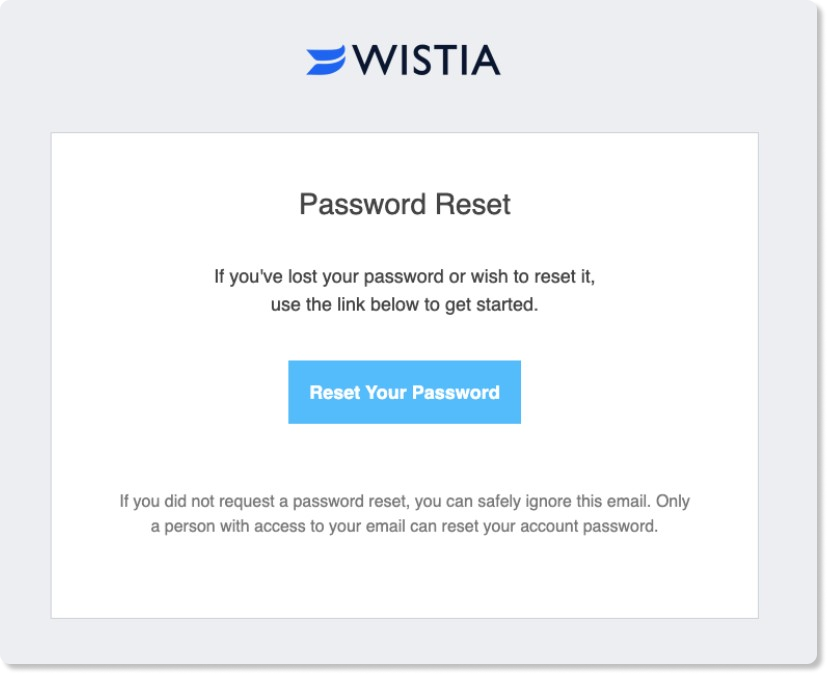
Payment receipt
This transactional email usually confirms a purchase after a transaction is complete.
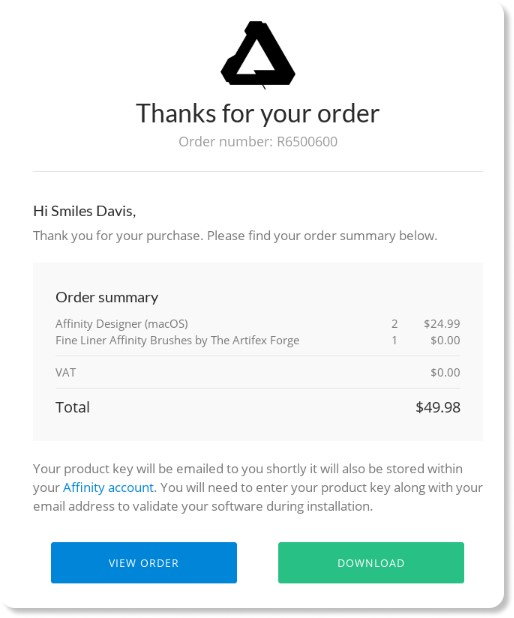
Newsletters
Newsletter emails are regular communications sent to subscribers who have opted in, offering updates, promotions, and valuable content. They serve to engage the audience, foster community, educate, and build relationships between senders and recipients.
💌What to include?
- Featured content, such as articles, blog posts, or updates
- Recent news and updates related to your industry, business, or organization
- Any special promotions, discounts, or offers available to subscribers.
- Upcoming events, such as workshops, webinars, or conferences
- Valuable tips, advice, or insights related to your niche or expertise
- Customer stories or testimonials from satisfied customers or clients
- Featured products or services
- Call to action like following you on social media, visiting your website, or making a purchase
- Social media links or buttons for subscribers to connect with you on other platforms.
Let’s take a look at some newsletter examples.
Educational emails
Their goal is to provide valuable information, insights, and resources to help recipients enhance their knowledge and skills on specific topics. For example, in Snov.io, we regularly send our users actionable tips we’ve accumulated in our blog posts. Such digests help them improve their sales and marketing campaigns using Snov.io tools:
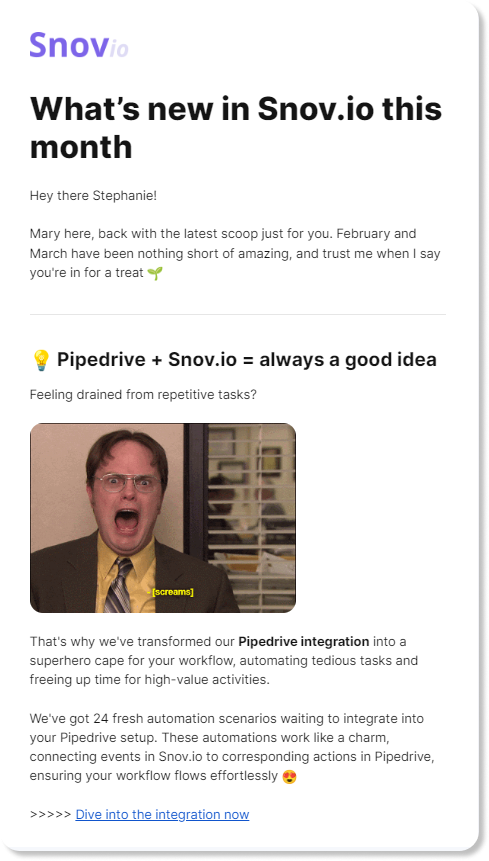
Curated content
These emails deliver handpicked material — articles, online reviews, blogs, videos — tailored to recipients’ interests. The goal is to build connections, drive engagement and conversions, and provide meaningful, relevant information.
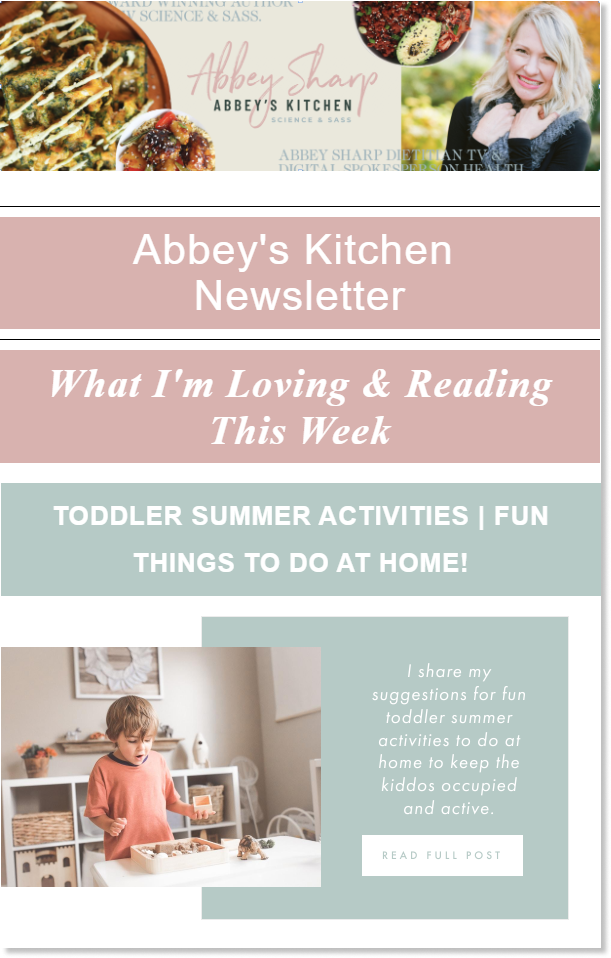
Announcement emails
Announcements and newsletters share similarities but differ in purpose, content, timing, target audience, and format. Newsletter emails provide subscribers with regular updates and information on a specific subject or industry. In contrast, announcements focus on crucial news, product launches, etc.
⏰When to send?
Here are some common scenarios when announcement emails may be sent:
- Product updates. Promote updates or improvements to your product or service.
- Event invitations. Invite recipients to attend upcoming events, such as webinars, workshops, conferences, or product demonstrations.
- Policy changes. Send these emails when there are changes to terms of service or conditions.
- Important news. Announcement emails can be sent for urgent or critical announcements that require immediate attention, e.g., service interruptions or security alerts.
Now, let’s look at some examples of the announcement email.
Upcoming event invitation
Let your recipients know about the forthcoming webinars, online courses, or product demos.
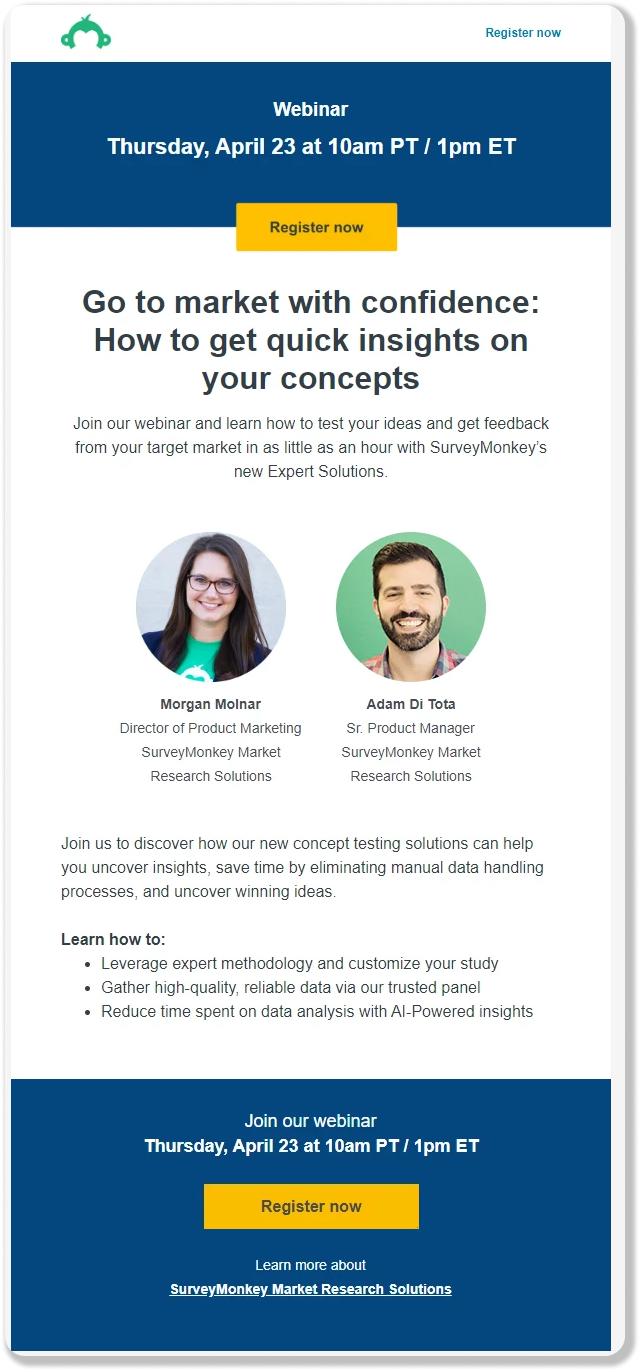
Product updates
The main objective of announcement emails is to inform users about updates and not push them to buy something.
For instance, here at Snov.io, we are tirelessly working on adding new features and improving our tools. So, our users regularly receive this type of announcement email from the Snov.io team. For example:
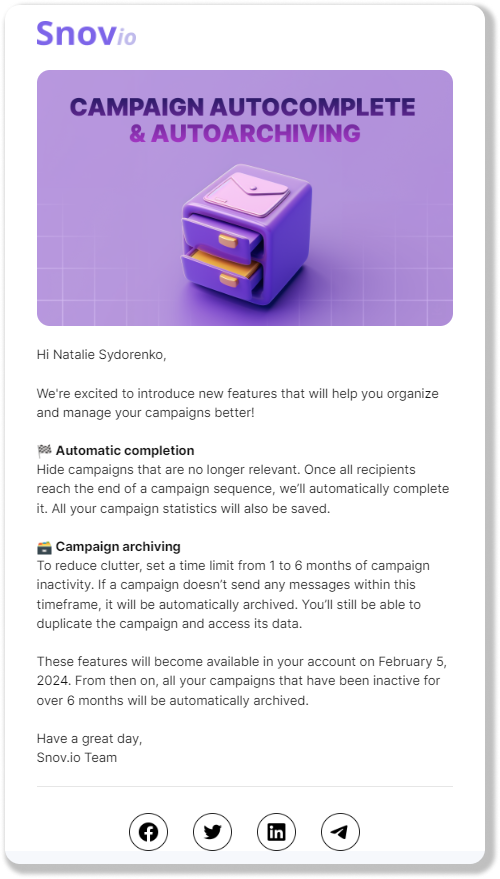
Privacy policy updates
A privacy policy or terms and conditions update email informs recipients about changes to the rules for using a product or service. It explains how these changes affect their data and the way they interact with the company.
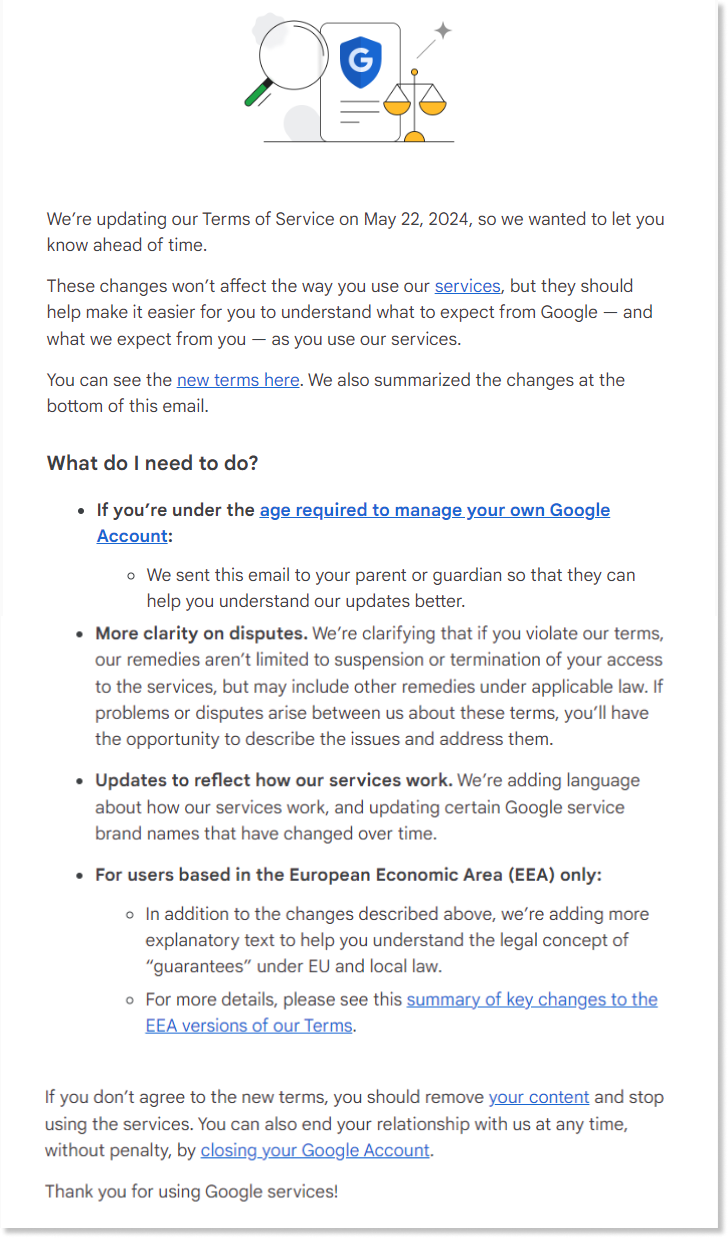
→ Looking for free templates? Check out our blog post!
How to use different types of emails?
Whichever type of email you choose for your campaigns, you should know how to get the most out of them.
Here are the key rules for using different types of emails:
- Maintain email list hygiene
- Personalize
- Automate
- Integrate
1. Maintain email list hygiene
To reach the maximum email deliverability score, make sure to use email verification. You don’t want to set up a well-thought-out email drip campaign only to send it to invalid email addresses.
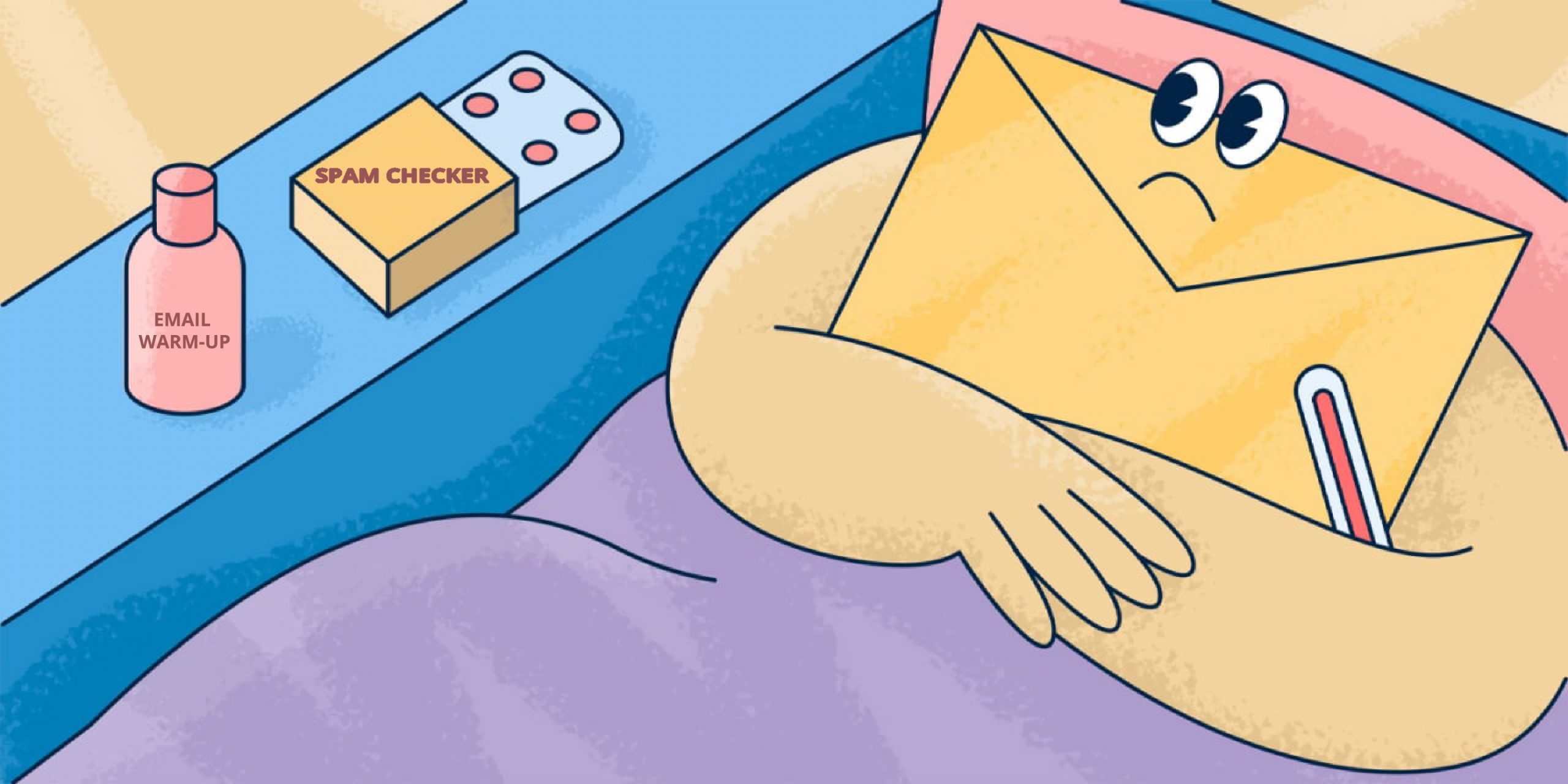
12 Best Email Deliverability Tools In 2026: Reviewed And Compared
December 23 2025
2. Personalize
Despite the growing popularity of email campaigns for lead nurturing, reaching certain age groups can take time and effort. Statista data shows that only 10% of U.S. millennials and 36% of U.S. Gen Zs are ready to buy a product or service after receiving an email newsletter.
|
👀 Did you know? 80% of consumers are likelier to purchase from brands that customize their emails. – Litmus 96% of marketers note the impact of personalization on repeat business, while 94% acknowledge its role in driving sales. – Hubspot |
The term ‘personalization’ is no longer a buzzword. Now, you can create customized campaigns for every user to address their specific needs.
|
🔮 How you can hyper-personalize your emails with Snov.io: With Email Drip Campaigns, you can send personalized emails to bulk recipients using variables. Specific lead details are automatically inserted into the copy, so every user receives a highly targeted message:
And owing to the Snov.io Spintax feature, email variations are created automatically based on alternative words or phrases you’ve added.
This way, you will personalize your emails and improve email deliverability. |
3. Automate
Email marketing automation is key to improving your daily workflow. Such tools allow you to effectively handle large email volumes without compromising personalization.
Luckily, with the right email marketing automation tools, you can effortlessly breeze through routine email sending and follow-ups. By aligning email delivery with user behavior, you can ensure timely interactions with leads, creating more opportunities for engagement and business growth.
|
👀 Did you know? 49% of marketers are using AI to generate email content. 56% of marketers using AI for content creation report better performance. AI-driven personalization in marketing can boost ROI by up to 70%. |
Incorporating powerful AI email assistants into your email marketing strategy simplifies such tasks as email design, content creation, and optimization.
|
🔮 Ready to automate your marketing emails with AI? Snov.io AI Persona-driven Email Builder is a fantastic collaboration between Snov.io and OpenAI. It helps you create different types of emails for your sales and marketing endeavors in just a few seconds. Write your custom prompt or provide information about your ICP and watch as the tool generates a perfectly tailored email in moments.
Besides, the tool will help you refine your email’s tone and spelling or craft a captivating message from your summary. On top of that, you can translate your email into 36 languages! |
4. Integrate
According to Litmus, about 30% of marketers are enthusiastic about investing up to 15% more in integrating email with other channels.
This is not surprising, considering that using a cross-channel outreach strategy significantly increases your lead generation efforts.
When it comes to integration of different types of emails, you can go two ways:
- Integrate your email marketing tool with other software for better performance. Combining tools may allow you to double your personalization, automation, or tracking power.
- Incorporate email into a comprehensive multi-channel marketing approach. This allows you to mix your email with other outreach types (social media, calling, etc.), resulting in higher conversion rates.
|
🔮 Here’s how Snov.io can help you with email integration:
What’s more, you can add automated actions like profile visits, post likes, connection requests, messages, and InMails.
And you don’t need to worry about safety! Snov.io offers a dedicated proxy for each LinkedIn account you connect to and works within the carefully researched daily limits. We took care of everything, so all you need to do is connect your LinkedIn account to Snov.io Everything will be automated and controlled from your single Snov.io workspace. |
Which type of email should you send?
When deciding which type of promotional email to send, consider the following:
- Audience: Who are your recipients? What is their relationship with you or your organization?
- Purpose: What do you hope to achieve with the email? Are you providing information, seeking a response, or promoting something?
- Content: What information or message do you need to convey? Is it transactional, informative, or personal?
- Timing: When is the best time to send the email? Consider the time zones, schedules, and preferences.
Last but not least, remember to test and analyze data on your emails’ performance over time. This will allow you to transform your communication strategy based on response and engagement metrics.
Wrapping up
Phew, the prep work is done! With the latest trends and different types of emails in your arsenal, your email marketing journey is primed for success!
And remember: if you need a reliable tool to automate, personalize, and integrate your emails efficiently, you know where to go. Snov.io is always at your fingertips, ready to help you grow sales.
Happy emailing!

